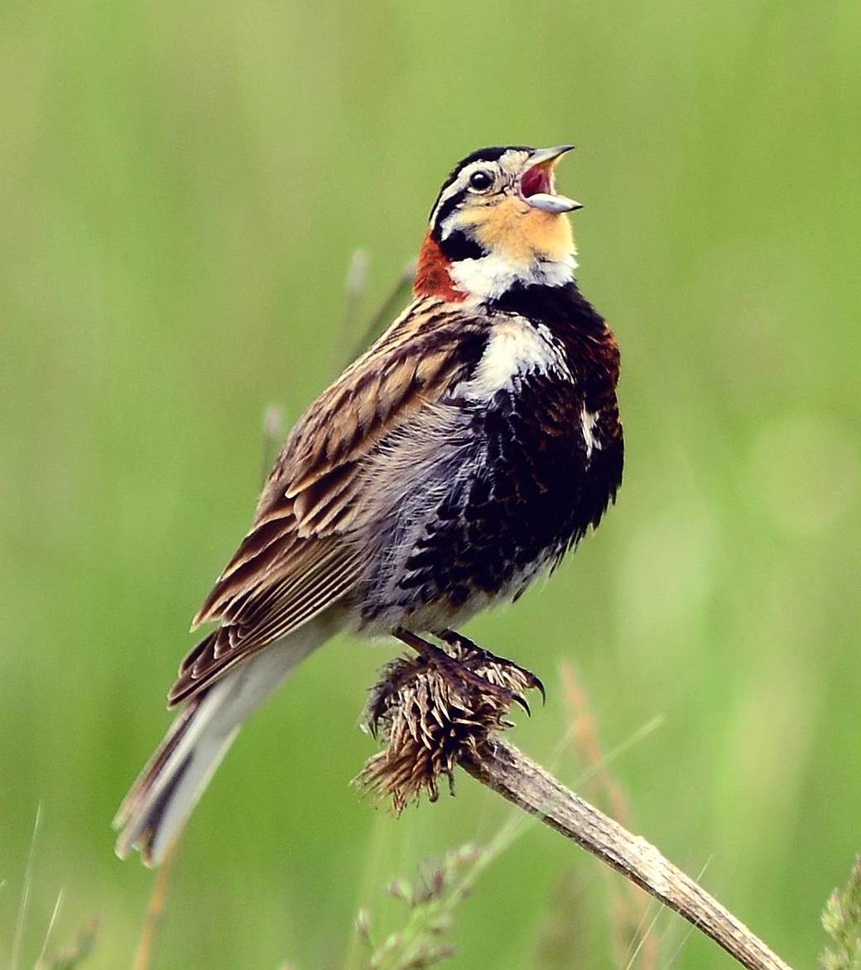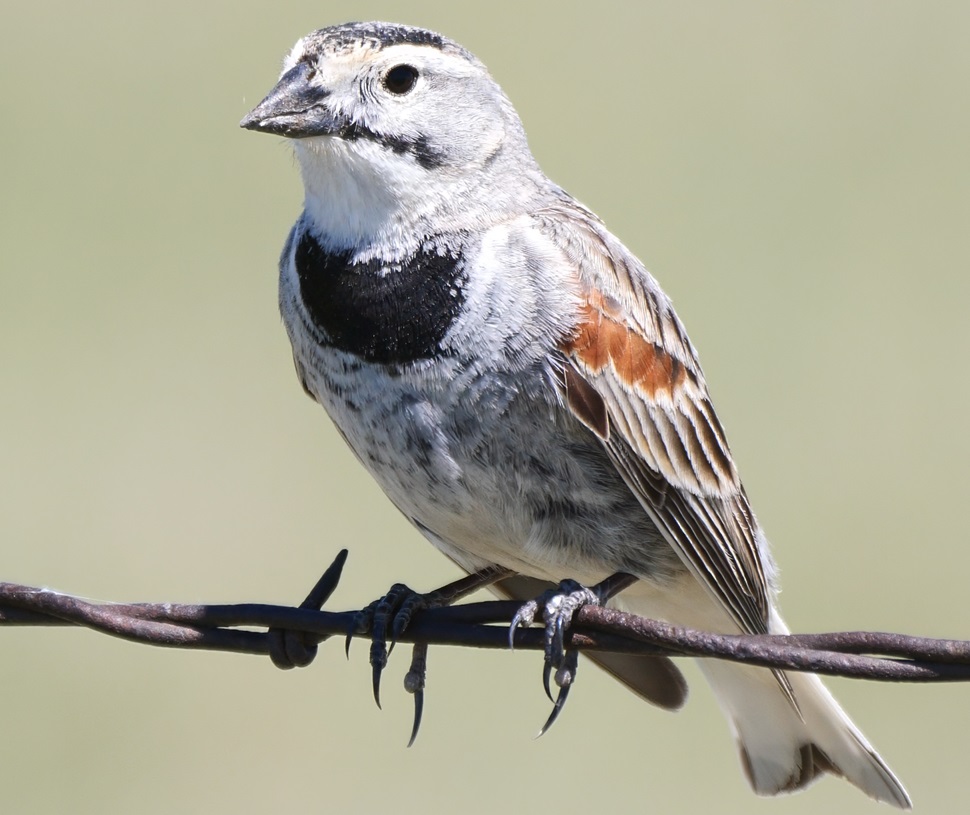The songs of Saskatchewan’s native prairies are ringing a little louder this summer, thanks to the presence of two rare and remarkable birds, the Chestnut-collared Longspur and the Thick-billed Longspur.
Both species are colourful grassland songbirds and can be found across patches of native prairie in southern Saskatchewan, but they’re also facing serious risks. The Chestnut-collared Longspur is federally listed as endangered, while the Thick-billed Longspur is considered threatened.
Spotting either bird is a treat, telling them apart, however, is another story.
“When trying to ID, you want to look for specific markers to help give you a clue,” said Emily Putz, Habitat Stewardship Co-ordinator with Nature Saskatchewan’s Stewards of Saskatchewan program. “One such marker is where their chestnut patch is.”
The birds share several similar traits: streaked brown backs, black facial markings, long hind toes (or “longspurs”), and patches of both black and chestnut. But there are key differences. The Thick-billed Longspur has a black chest patch, grey belly, and a chestnut wing patch, while the Chestnut-collared Longspur, true to its name, has a chestnut patch around the collar and a fully black belly. It also tends to be more colourful overall.

While the two longspurs often live in overlapping areas, their habitat preferences diverge slightly. Chestnut-collared Longspurs seek out shorter, well-grazed grasslands and are known to follow cattle herds from year to year. Thick-billed Longspurs, meanwhile, prefer taller vegetation within grazed zones.
“Both species are facing several threats, the biggest of which is the loss and degradation of their breeding habitat, the shortgrass native prairie,” said Putz. “And both rely heavily on the ranching community that provides and safeguards their remaining habitat.”
Nature Saskatchewan is encouraging rural residents and landowners to report sightings and participate in their stewardship programs. Involvement can also include funding opportunities for fencing and water development to support conservation grazing.
Anyone who spots a Chestnut-collared or Thick-billed Longspur can report sightings by calling the toll-free HOOT line at 1-800-667-4668 or emailing outreach@naturesask.ca. Sightings help track population trends and habitat use — and all personal information remains confidential.
The Stewards of Saskatchewan program works with landholders to conserve habitat for at-risk species across the province’s grasslands.
